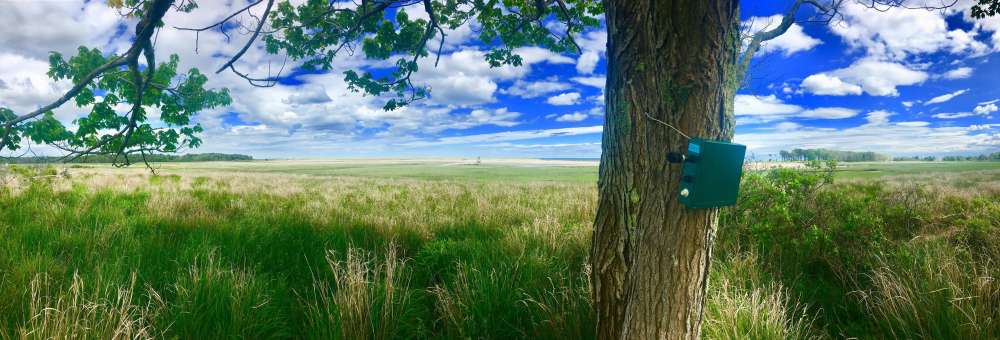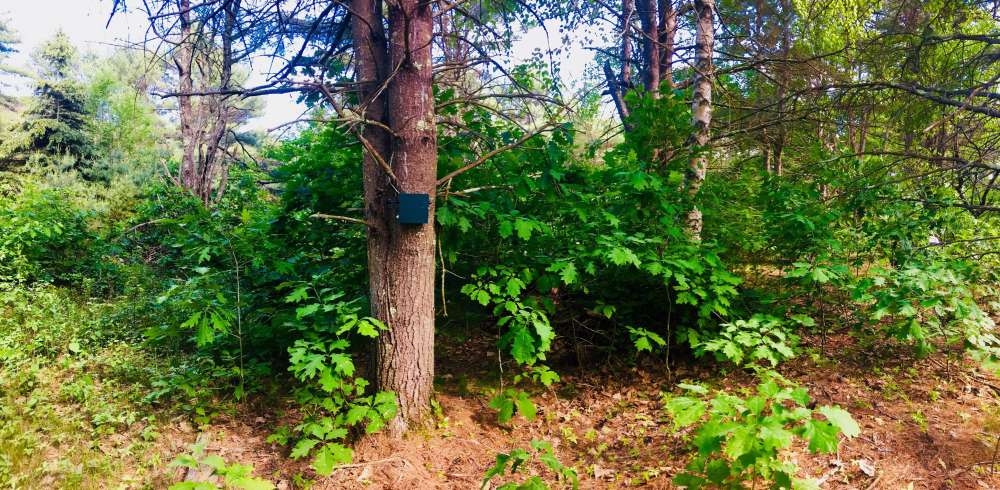The Wrack
The Wrack is the Wells Reserve blog, our collective logbook on the web.
The Wrack is the Wells Reserve blog, our collective logbook on the web.

My favorite and most fulfilling activity at the Wells Reserve is to listen. Listen to the tides greet the shoreline, listen to the birds share their stories, listen to the wind dance with the trees, or listen to the train go by full of traveling strangers. There are many sounds that make up our experience of being at the reserve—and there’s actually a science to it!
As a scientist-in-training, this is fascinating to me. I have always assigned emotional and mental associations with sounds. When I hear sirens, I feel nervous. When I hear an orchestra playing in Db major, I feel sad. When I hear peepers outside my window as I am falling asleep, I feel comfortable. Sounds can truly influence my physiological, psychological, and cognitive health. Similarly, sounds communicate a lot of information regarding the overall health of an ecosystem.
Soundscape ecology is the study of the sound within a landscape. This field of study is based on an understanding of how sound can be used to understand coupled natural-human systems within a habitat.
The first step in analyzing the soundscape is to record it! Here at the reserve, we use six soundboxes that are programmed to record during specific times around the clock. We wanted to record for 10 minutes at the top of every hour and 3 consecutive hours during dusk (7-10pm) and dawn (5-8am), when activity is the highest. This schedule aids our effort to understand how activity within our ecosystems changes from dawn to dusk and between night and day. Right now, early evening soundscapes are filled with sparrows, cardinals, and gentle mourning doves. How might this community compare to overnight sounds at the same location?

To collect an accurate sample of biodiversity, we deployed two of our soundboxes on opposite sides of three different habitat blocks. Fortunately, there is no lack of interesting and exhilarating ecosystems in our corner of the world.
Represented in our study are salt marsh, an early successional forest habitat, and a fairly secluded woodlot. Each of these locations has its own personality—expressed simply enough by the diverse terrain I must travel to get to our recorders.
My mucky, salt-stained waders gear me up to venture through the tallest grasses and deepest sinkholes to get to the singular tree on our salt marsh site. Once I am out there, I am accompanied by the sounds of the tide, the breeze, seabirds, and, in July, the buzzing of vicious greenhead flies.
The same waders provide me with a thick shield of protection from one-on-one contact with the prickly bushes and multiple tree branches I must romp through to get to our early successional forest habitat. Aside from the thrash of my loppers and occasional wind moving through the tightly packed vegetation, this site is pretty quiet when I visit.
On my trek toward the woodlot sites, my waders’ sole purpose is to act as a neutral color palette so I can spy the dozens of ticks that latch onto me. Once I reach the site, I am greeted with sounds of woodland birds, chipmunks, and squirrels. At these sites, I sometimes find a microphone missing due, I think, to a curious woodland friend.
Each habitat provides a different auditory link to complex natural systems. The salt marsh is a sanctum of non-biological audio signals (geophony) like winds and waves, though our recorders pick up songs of saltmarsh sparrows and cries of terns that would be missed if we only recorded inland. Our woodlot habitat, being the closest to consistent human activity, delivers more waves of anthrophony (human-created sounds) than we expect to record in the marsh.

Right now, we are capturing a snapshot of who and what interacts within our designated habitats, comparing sounds across time and space, and maintaining consistency in our techniques. Our guiding questions include: How do anthrophonic sounds differ in composition (acoustic frequency, time interval) from biophonic sounds? Do certain sounds indicate a healthy landscape or a deteriorating one? Our interests will become more specific and extensive as early results spark questions.
The Wells Reserve is managed by passionate conservationists, scientists, and stewards to maintain the evolving landscape as a place to discover. Sound is an integral part of that landscape. Soundscapes define communities by their boundaries, their actors, their geographic intricacies, while the emerging sounds impart a sense of a place, reflect cultural values, and inspire an intriguing urge to discover.